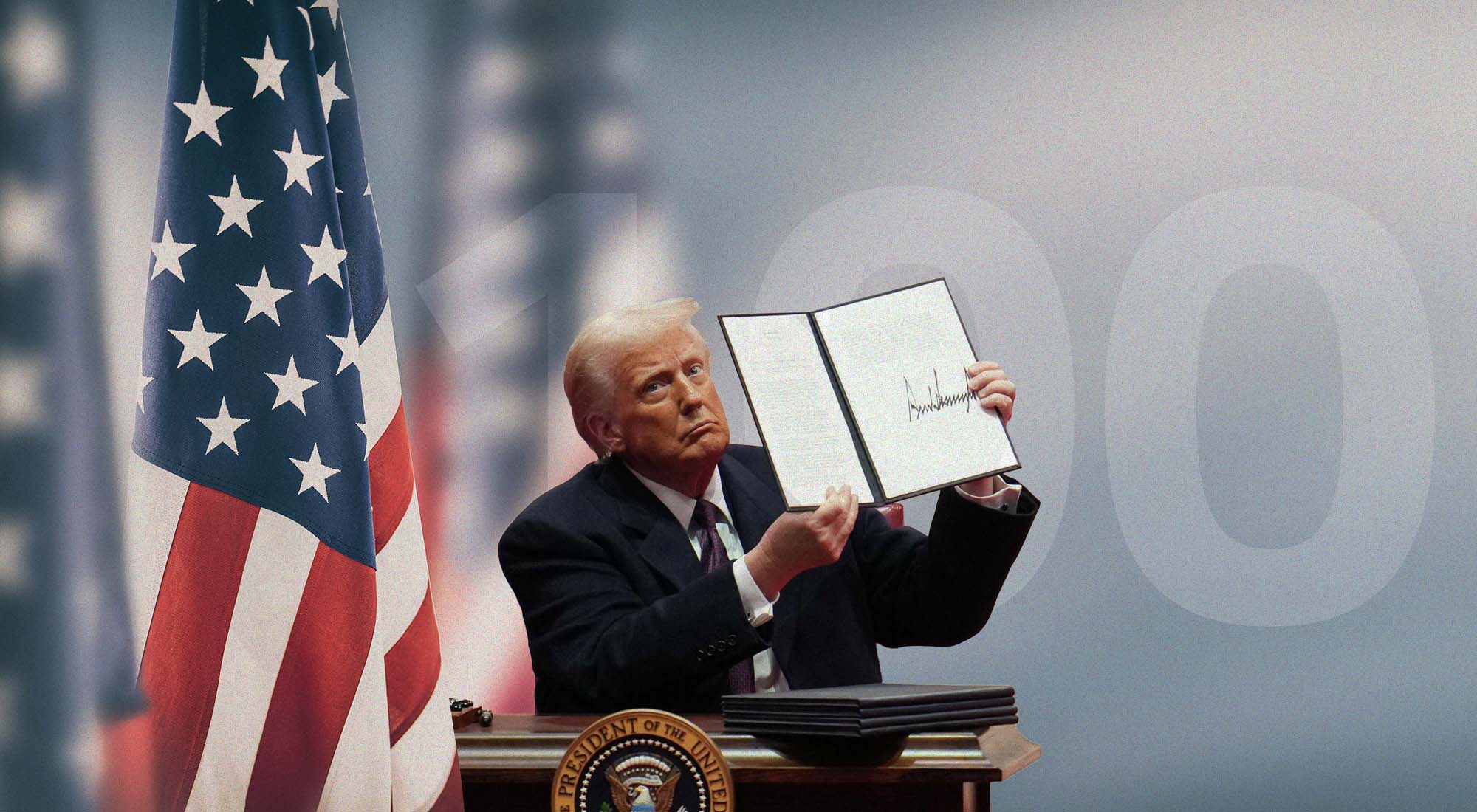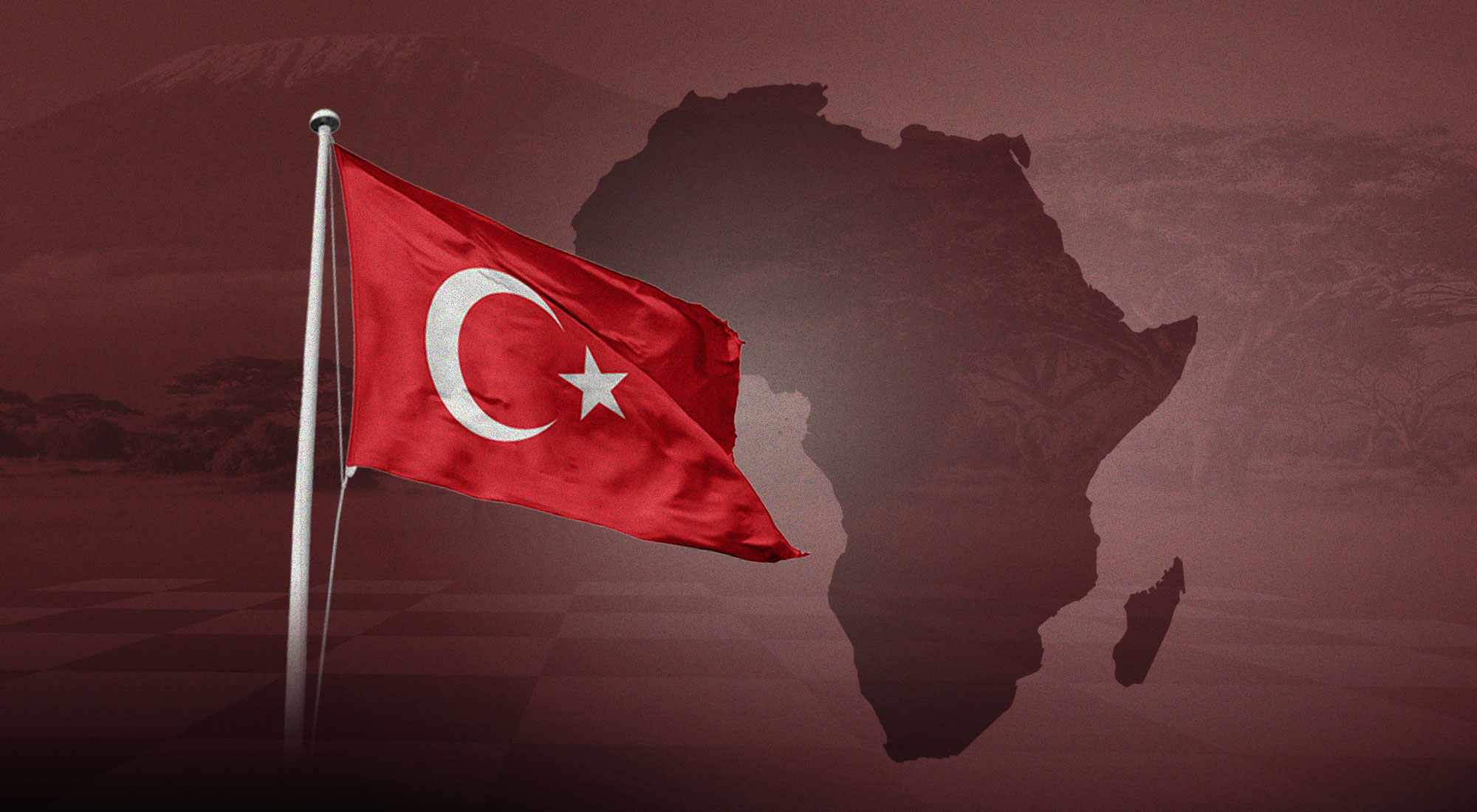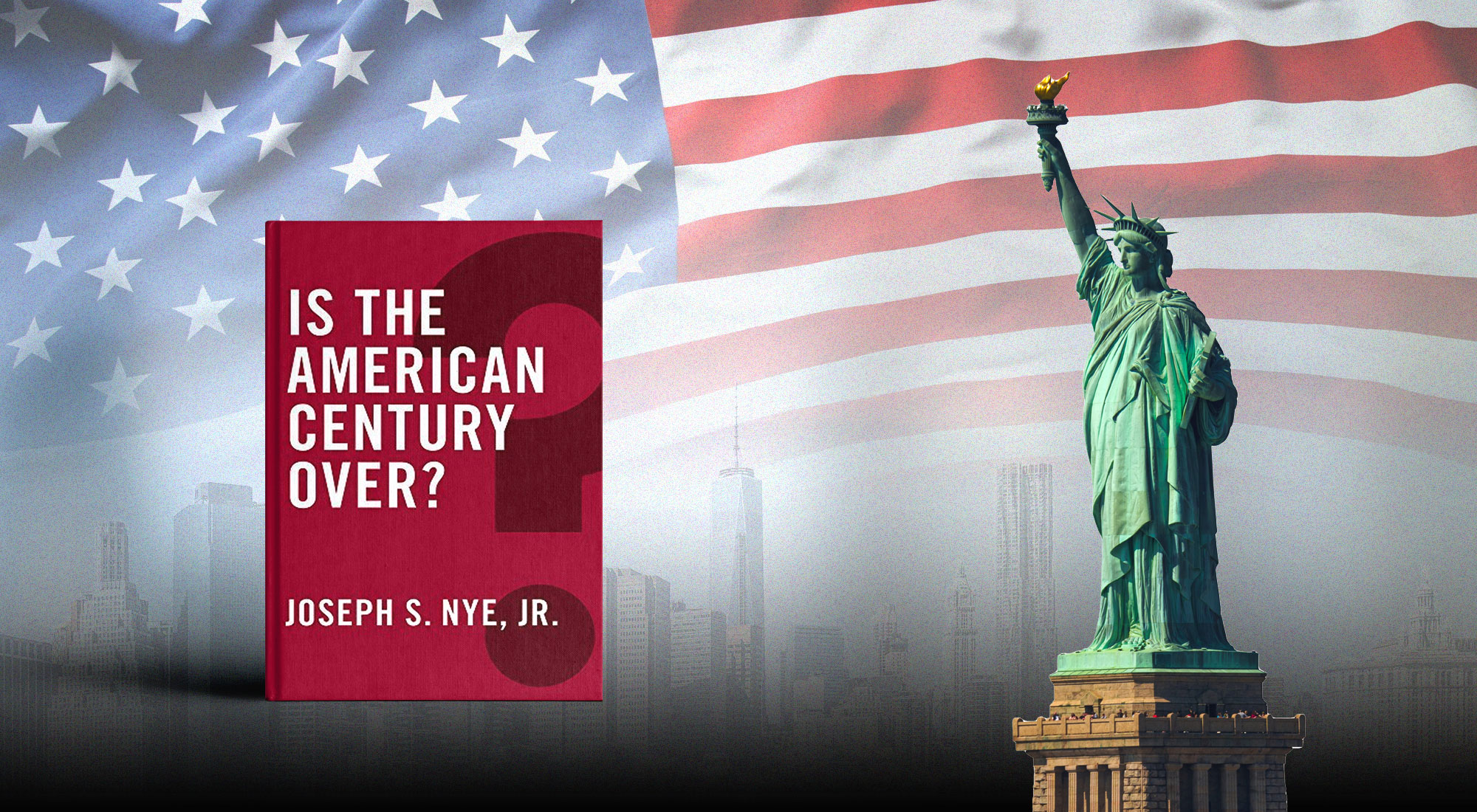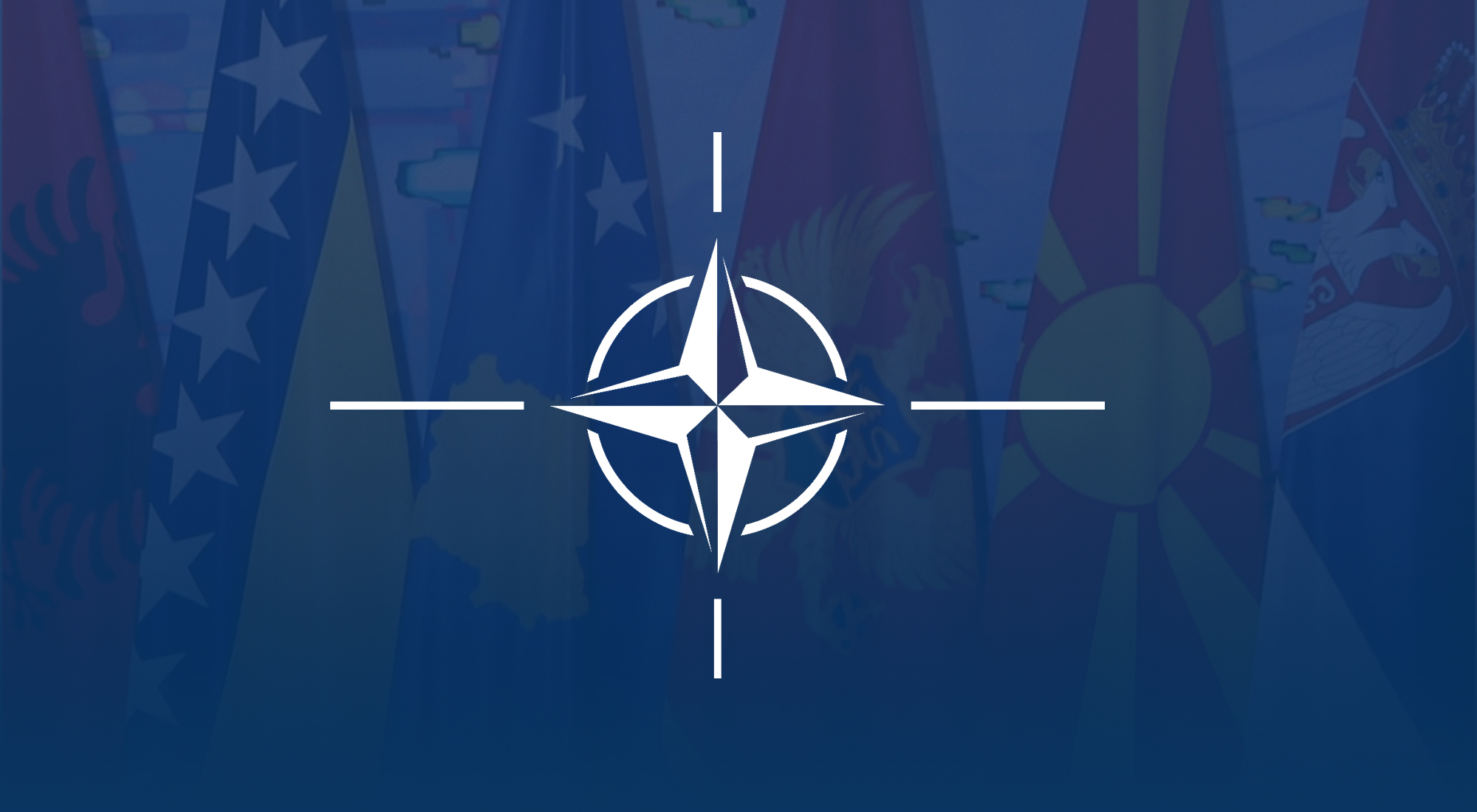The outcome of the 2024 American presidential election revealed to the world that the United States has an appetite for national populism in the executive branch. The restoration of the America First doctrine came back with a vengeance! President Donald Trump’s second term in the first 100 days demonstrated to the world that Make America Great Again 2.0 is one of the most transformative and unconventional governing approaches in recent U.S. history. The first 100 days exhibited that Make America Great Again 2.0 is designed to persistently challenge the American democratic system at home and abroad.
Make America Great Again 2.0 was ushered in from the country’s desire to secure a presidency that would be tough on immigration, strong on the economy, and ensure domestic protectionism from weak intermestic policies. Beyond the U.S., the return of the Trump administration reflects a broader global trend, as authoritarian populism continues to gain traction in several Western democracies and emerging powers, including India and Australia. In countries such as the United Kingdom, France, Italy, Germany, and Hungary, populist movements have increasingly challenged liberal democratic norms, contending that existing political systems are not effectively addressing public concerns or improving quality of life.[i]
Trump’s first 100 days continue to demonstrate that they use a similar playbook as the European powers did, which includes modern populist policy approaches. The first 100 days presented a sneak preview of the administration’s second-term initial national security priorities.
First, the Trump administration underscored the importance of implementing the “peace through strength” vision. The “peace through strength” vision entails “restoring safety and security at home and abroad.”[ii] More specifically, the White House relaunched building the southern U.S.-Mexican border wall, increased hostage affairs activities, added more organizations from Latin America as part of the foreign terrorist organization list, combated ISIS, and reinstituted the maximum pressure campaign against Iran.
Second, the “peace through strength” vision implemented stricter immigration policies, espousing aggressive mass deportation and addressing border crossings.
In addition, the strategy imposed massive global tariffs and implemented additional mercantilist policies while disregarding the use of the World Trade Organization (WTO).
Furthermore, the strategy rapidly eroded U.S. global leadership in international governance. Like Trump’s first term, the U.S. withdrew or significantly diminished Washington’s role in many multilateral entities.
Re-examining traditional grand strategies also helps further explain Trump’s national security interests during the first 100 days. In 2018, I published a piece in Lima Charlie News, arguing that Trump’s 2017 national security strategy reflects interests in all three traditional grand strategies: American primacy, offshore balancing, and liberal internationalism. However, this is not the case during his first 100 days. Thus far, the only interest that crystallized coherently during his first 100 days is American primacy and offshore balancing. The administration expressed American global dominance in artificial intelligence, global manufacturing, cryptocurrency, and the energy sector. Excessive symbolism is part of the American primacy playbook too. The administration even went as far as renaming the Gulf of Mexico to the Gulf of America! For offshore balancing, the administration is showing some signs of it in Europe, the Arabian Gulf and Northeast Asia. The administration engaged with key leaders from France, Ukraine, Saudi Arabia, India, and Japan.
Additionally, foreign policy experts have used other international relations perspectives, such as competitive authoritarianism, to help explain Trump’s second-term national security priorities. Experts have argued that America is transitioning from a liberal democracy to competitive authoritarianism, a government model used in Hungary and Turkey. A New York Times article claimed that competitive authoritarianism involves abandoning the democratic principle of checks and balances and attacking the media, non-profits, law firms, and academic institutions. Under the Trump administration, the U.S. will navigate the international system, promoting a lack of interest in maintaining hegemonic rule and embracing transactional approaches while positioning itself as a less competitive force against its near-peer competitors, China and Russia.[iii]
Ongoing challenges to the integrity of American democratic institutions are reshaping national security priorities. The world is rapidly learning that Trump’s emerging national security policy priorities reflect significant changes from his first term. However, these significant policy changes should not be a surprise because many of them were recommended in Project 2025,[iv] a comprehensive conservative policy blueprint developed by the Heritage Foundation to guide the next Republican administration across key areas such as executive power, immigration, education, and federal governance. The Trump administration is actively implementing Project 2025 through executive orders and collaborating with the legislative branch. Here are the top identified major policy changes:
American Expansionist Policies: American expansionism is one of the major policy shifts from the first administration, reflecting more interest in unipolarism. Trump expressed interest in expansionist policies involving multiple areas, including Canada, the Panama Canal, Greenland, and the Gaza Strip. Modern-day expansionist policies clearly conflict with the international norm born out of the 1945 UN Charter. According to Article 2, Provision 4, “All Members shall refrain in their international relations from the threat or use of force against the territorial integrity or political independence of any state, or in any other manner inconsistent with the Purposes of the United Nations.”[v] Paradoxically, America spearheaded the inclusion of this principle that upholds respecting the existence of sovereignty in the UN Charter and actively used it against other nations, including Iraq after the 1990 invasion of Kuwait and the ongoing Russian military incursion of Ukraine. Once unthinkable but becoming more of a reality, the U.S. is not upholding this principle. Trump even flirted with the idea of using force or political coercion to seize Greenland and make Canada the 51st state during his first 100 days.
Tougher Immigration Enforcement Policies: Another major policy change that occurred during the first one hundred days is the administration’s aggressive immigration policy. The administration has gone beyond building the U.S.-Mexico southern border wall and reducing border-crossing. Trump doubled down on immigration enforcement laws reflected in the Executive Order: Protecting the American People Against Invasion to remove undocumented criminal immigrants that are perceived as a threat to public safety.[vi] As a result, the executive order created unprecedented policy implementation outcomes that also conflict with traditional democratic norms, such as increasing expedited removals, expanding the utilization of U.S. Armed Forces to support massive deportations, rescinding temporary protected status and safe mobility programs, suspending refugee resettlement program, terminating birthright citizenship for children of undocumented parents, and suspending development aid and humanitarian aid.[vii]
Divestment in Social Safety Net Programs: Building an American competitive workforce holistically was a national security priority during Trump’s first term. In fact, Trump’s National Security Strategy (2017) mentioned several times that our nation needs to build a competitive workforce that acquires modern skills in STEM (Science, Technology, Engineering, and Mathematics). However, Trump’s first 100 days revealed that the administration is not committed to making America competitive holistically. The severe divestment in social safety net programs, including Medicaid, social security, student loan programs, nutritional assistance programs, veteran benefits, and education assistance and research programs, are all indicative of no interest in investing in the working class. As a result, the budgets are unpopular, even among Trump’s supporters.
Many Democratic elected officials argue that the purpose of these cuts is to provide tax breaks to wealthy Americans. The erosion of these services will inflame economic insecurities and cripple the ability to build a modern and competitive workforce. Also, defunding the world’s top universities diminishes America’s global competitive edge in education and research, which impacts building a future competitive workforce. CNN commentator Fareed Zakaria eloquently explained that Trump’s cultural revolution is an assault on universities and colleges, curtailing American innovation and critical programs such as finding the cure to cancer.[viii]
U.S. Leadership in Digital Finance Technology: During Trump’s first 100 days, the administration presented new interests in digital finance technology. President Trump issued an executive order calling for the U.S. government to invest in a strategic bitcoin reserve and a digital asset stockpile. Trump even recommended that the U.S. be the leading nation in cryptocurrency and appointed an artificial intelligence and cryptocurrency czar. The executive order also lowered barriers for digital currency companies, promoting less market regulation. President Trump reversed President Biden’s legal protection initiatives for consumers from predatory malpractices by permitting lawsuits against the company.[ix]
Divestment in National Security Agencies: The Trump administration demonstrated a severe lack of interest in soft power by divesting in critical national security agencies such as the U.S. Agency for International Development (USAID), the Department of State, the Department of Defense, the Department of Veteran Affairs, the Environmental Protection Agency, the Central Intelligence Agency (CIA), and potentially the Federal Emergency Management Agency (FEMA). This major policy change shifted from Trump’s first term. A clear example of this shift is looking back at former Secretary of Defense Jim Mattis’s famous “guns versus butter” statement. Mattis stated during his Senate confirmation hearing, “If you don’t fund the State Department fully, then I need to buy more ammunition ultimately. So, I think it’s a cost benefit ratio. The more that we put into the State Department’s diplomacy, hopefully the less we have to put into a military budget as we deal with the outcome of an apparent American withdrawal from the international scene.”[x]
During Trump’s first term, the administration partially decided against Secretary of Defense Mattis recommending increasing the defense budget and decreasing the State Department budget. On the other hand, Trump’s first one hundred days are clearly divesting across all national security agencies. Also, these budget cuts have disproportionately impacted specific agencies like USAID. Significant cuts severely impacted several humanitarian programs in global health, the agricultural sector, human rights, food security, infrastructure development, job security and many more.
The Department of Government Efficiency (DOGE) spearheaded the implementation, claiming that these budget cuts were necessary because they included fraud, waste, and abuse. On the contrary, the Trump administration inherited an agency with a minute budget that always needed more funding to be fully operational and effective. In fact, USAID has always learned how to do more with less. Under the directives of DOGE, the U.S. administration cut a wide range of global programs, despite these benefits accounting for less than one percent of the federal budget. One of those benefits included America maintaining its competitiveness through humanitarian programs against Russia and China during the era of strategic competition.
The Art of the Peacemaker: During the first 100 days, the American people also learned that despite significant cuts toward our soft power tools, the Trump administration did not fully dismiss the power of diplomacy. The Trump administration’s interests peaked as a global peace broker. The administration hit the ground running, securing a series of peace deals. Trump claimed success in parlaying peace deals in several crises, including the Russia-Ukraine War, the Rwanda and the Democratic Republic of Congo conflict, and the Israel-Hamas conflict.[xi] But it appears as if all three conflicts are far from being resolved. The Russia-Ukraine War is still showing signs of intensive fighting. Some have accused President Trump of forcing Ukraine to accept unfair concessions, which is making it difficult for both countries to commit to a sustainable truce.[xii] For the Israeli-Palestinian conflict, the Trump administration promoting the Peace to Prosperity Plan goal is to revive the two-state solution. The plan includes several objectives, including economic development and investment and additional security de-escalatory approaches. However, based on the current situation in Gaza, the security conditions continue to exacerbate with the growing famine crisis.[xiii] Presumably, the conflict is struggling to reach a peace deal that will drive significant progress in peace negotiations. However, the Rwanda-Democratic Republic of the Congo conflict is possibly the closest example of Trump being able to claim success in peace negotiations. Multiple open sources are reporting that the peace agreement talks are moving forward. However, the current phase of the deal is an initial step signaling that more needs to be done.
Dismantling Diversity, Equity, and Inclusion (DEI): The administration made historic moves by ending DEI programs in the federal government. The Trump administration viewed these programs as anti-merit-based and anti-White. In addition, Trump’s interest in dismantling DEI links traces back to the George Floyd Movement, a period that significantly revived DEI programs in the private and public sectors. The Trump administration actively rolled back most of Biden’s DEI initiatives. Ironically, one of the top historic DEI programs was created by the Republican Party and survived Trump’s first term. President Lyndon Johnson supported the Civil Rights Act of 1964 and established the Equal Employment Opportunity Commission (EEOC). The EEOC is a federal agency that enforces the elimination of employment discrimination.[xiv]
Engaging in Tough Diplomacy with Allies and Partners: The first 100 days suggested a reluctance by President Trump and his national security team to engage in complex or high-stakes diplomatic efforts. Trump’s meeting with Ukrainian President Volodymyr Zelensky signals a willingness to adopt a more assertive posture toward key allies, reflecting a foreign policy approach that prioritizes leverage and confrontation over traditional diplomacy. Trump exhibited similar behavior when he engaged in intense public and private disagreements with Canadian Prime Minister Justin Trudeau.
On the other hand, Trump continued similar policies from his first term. During his first 100 days, President Trump acknowledged that the U.S. is still engaged in strategic competition, still interested in eroding U.S. global leadership in international governance, still questioning the extent of the human impact on climate change, and regional policy implementation will vary across the international system. The following are the top major points of policy continuity identified:
U.S. Involvement in Strategic Competition: The Trump administration will continue to engage in strategic competition activities. But the approaches will be applied differently between China and Russia. During his first 100 days, the Trump administration appeared tougher on China compared to Russia. The recent trade war with Beijing is a clear sign of this approach. Meanwhile, Trump continues sending overtures to Moscow. The only approach that reflected the exact opposite was when the administration sanctioned Moscow for failing to reach a peace deal with Ukraine.[xv]
U.S. Global Leadership and Global Governance: The gradual decline of U.S. leadership in global governance reflects a broader trend of policy continuity in prioritizing domestic agendas over multilateral engagement. Similar to Trump’s first term, the administration withdrew from critical institutions, organizations, and forums such as the World Health Organization, the United Nations Human Rights Council, and the Paris Climate Accord. Predictably, the U.S. will remain in other global organizations but with a diminished role. There have been speculations that the administration’s interest is to defund major international institutions, including NATO, the UN, and the World Bank even though it did submit nominations for the U.S. Ambassador to NATO and the U.S. Ambassador to the UN posts. Furthermore, Trump is even willing to discredit international organizations that the U.S. is not part of. During his first 100 days, the Trump administration sanctioned the International Criminal Court over Prime Minister Benjamin Netanyahu’s legal charges involving the Gaza Crisis.[xvi]
Climate Change is a Hoax: Trump has consistently dismissed the scientific consensus on climate change, often referring to it as a hoax. In line with his first term, the administration has once again withdrawn from the Paris Agreement, reinforcing its skepticism toward multilateral climate commitments. Also, the administration continued to downsize the EPA and ended the National Climate Assessment, a major program initiative that worked on intense analysis and policy recommendations on how to combat climate change.[xvii]
Regional Policy Interests Variation Will Continue: The first one hundred days also disclosed that the administration’s policy interest will vary across different regions. Additionally, the first one hundred days showed some interest in offshore balancing or the administration’s lack of commitment to preserving U.S. dominance by working with regional powers to counter hostile powers in Western Europe, the Gulf Region, and Northeast Asia. Global populism is shaping the U.S. to engage in offshore balancing and encouraging the administration to no longer advocate as an international police force. The recent U.S. decision demanding European allies and partners to contribute more to NATO is a policy carried over from his term. Also, downsizing the U.S. military posture in the region is a sign of offshore balancing or indirectly signaling to Europe that they need to take on more leadership in countering Russian aggression.
To reiterate, U.S. foreign policy implementation approaches will be applied differently across the international system. The first 100 days conveyed a variety of foreign policy approaches. Foreign policy implementation approaches include American expansionism, peacebuilding, American primacy, entrenchment, counterterrorism, and disregarding the promotion of regional multilateralism and neutrality. More specifically, here is a breakdown of different regional approaches:
The African Continent: The first one hundred days revealed that Africa is less of a priority to the Trump Administration compared to other regions. Several speculative open sources mentioned that the administration is deeply interested in downsizing the U.S. posture, including closing down many embassies and folding up President George Bush Jr’s legacy military organization, the United States Africa Command (USAFRICOM). As a result of the recent political turbulence with Burkina Faso and the administration’s limited interest in South Africa’s Afrikaner community, deprioritization will likely continue, which may lead to dismantling President Biden’s African Leadership Summit Implementation Initiative, creating another reversal in the U.S.-African relationship. This move is going to further put the U.S. behind China and Russia in Africa.
The Middle East and North Africa: Ensuring regional peace and security in the Middle East will remain one of the top priorities for the administration, mainly due to U.S. commitment to Israeli security. Israel remains a top security ally. Trump is committed to supporting Israel’s offensive-defensive operations and a ceasefire. During his initial bilateral leadership engagement with Prime Minister Benjamin Netanyahu, Trump shocked the world with his announcement to the world that he is committed to rebuilding the Gaza Strip in a post-conflict security environment. He even described the project as the “Riviera of the Middle East.”[xviii]
Also, Trump continued his support of protecting Israel by working closely with neighboring allies like Jordan, where he requested Amman to house children from Gaza. For Saudi Arabia, the Trump administration’s policy interests entail deepening economic and security cooperation. President Trump would like to secure new deals that will help lower oil prices and more economic and investment bilateral deals through the Israeli-Saudi Arabian normalization process. Security cooperation is also another area of interest. The administration will continue providing security assistance and remain active in supporting Saudi Arabia against Houthis in Yemen. In addition, the administration is closely working with Riyadh on peace deals involving the Ukraine War and nuclear non-proliferation negotiations with Iran.
Moreover, Trump is reinforcing the Maximum Pressure Campaign against Iranian aggression. The administration is committed to nuclear non-proliferation negotiations with Iran to dismantle the program entirely. The 12th April negotiations focused on the de-escalation of regional tensions and the possibilities of economic sanction relief. The talks did not address Iran’s ballistic missile program. As a result of the administration expressing its willingness to use force against Iranian nuclear facilities, Tehran is likely to cease enriching its uranium program or be willing to reduce to levels that were agreed upon under the 2015 Joint Comprehensive Plan of Action (JCPOA). Applying pressure using military force may have stopped Iran from building its first nuclear bomb. However, uncertainty remains on whether this process will relax tensions in Gaza, Lebanon, Syria, Yemen, and other parts of the region.[xix]
Europe: Europe is also a top priority for the Trump Administration. During his first 100 days, the U.S. president met with several European leaders, including the UK Prime Minister, Keir Starmer, French President Macron, and the NATO Secretary-General and had a closed phone call meeting with Russian President Vladimir Putin. In addition, President Trump delivered a virtual address at the World Economic Forum, where he underscored his confrontational stance toward the European Union by signaling support for major tariffs. Both his remarks at the Forum and his assertive posture in the meeting with President Volodymyr Zelensky marked significant moments in U.S.-European relations. These actions contributed to a growing perception of unease among European leaders regarding the direction of U.S. foreign policy under the Trump administration. The latest example of this development is the recent visit to the Vatican when Vice President J.D. Vance visited Pope Francis. Multiple sources mentioned that Pope Francis was disappointed with the administration’s immigration policies.[xx]
Moreover, the Ukraine War is also another reason why Europe is a high priority. During the first 100 days, President Trump pushed hard for a peace deal with negotiations over Ukraine’s critical minerals. He claimed that the deal would help generate billions of dollars in security assistance.
The Western Hemisphere: The U.S. prioritizing the Western Hemisphere remains uncertain. During the first 100 days, Secretary of State Rubio did publicly commit to shifting more policy attention to the Western Hemisphere. However, the U.S. is increasingly perceived by some regional actors as an unreliable partner, particularly in light of its limited engagement in countering China and Russia’s growing strategic influence in Latin America and the Caribbean. The initiation of temporary regional tariffs deepened the lack of trust with Mexico and Canada. Also, Mexico continues to deal with additional outlandish decisions, such as Washington requesting to deploy troops and promoting the idea of conducting drone activities in Mexico. For Central America, El Salvador reemerged as a top recipient in accommodating more immigrants and even sending detainees to prison systems. Some of these immigration cases are considered unconstitutional.
In South America, countering adversarial outcomes associated with security instability in Venezuela is a priority. Rubio discussed with several regional CARICOM[xxi] leaders how to address the Venezuelan migration issue. Meanwhile, great power competition is making significant inroads. During the first 100 days, CARICOM leaders maintained their ongoing engagements with China, securing new infrastructure development and commercial deals. In addition, Havana continues to work with U.S. adversaries and competitors; meanwhile, the administration redesignated Havana as a state sponsor of terrorism. Thus far, the U.S. is showing little sign of competing against Beijing involving major soft power projects similar to the Belt and Road Initiative.[xxii]
China and the Indo-Pacific Region: The Indo-Pacific will continue to remain a high priority. The Trump Administration is committed to competing against China. Imposing a high percentage on Chinese imports sent a strong signal about the administration’s willingness to aggressively rectify free and fair trade malpractices. Other critical policies, such as the U.S. commitment to Taiwan’s security, remain uncertain. The administration’s imposing tariffs on Taiwan created a new relationship dilemma with Washington questioning whether the executive branch is a reliable partner. While the administration has shown less visible engagement on the Taiwan issue in recent months, the broader Indo-Pacific region continues to be a strategic priority for U.S. foreign policy. The first 100 days disclosed that India is still treated as a strategic partner in the Indo-Pacific. President Trump met with Prime Minister Narendra Modi. In addition, Vice President J.D. Vance visited India during the first 100 days.
Regarding Pakistan, the administration is partially playing the balancing act. As part of a list of national security accomplishments, Trump mentioned that his team worked on a counterterrorism initiative with Pakistan.[xxiii] Also, in response to the recent India-Pakistan conflict, Trump urged for a ceasefire and offered to mediate a peace deal.[xxiv]
Additionally, the administration further showed interest in Indo-Pacific security. Secretary of State Rubio resumed Quad meetings with India, Australia, and Japan. The meetings discussed continuing a collective deterrence in the Indo-Pacific region.
The Arctic Region: President Trump’s desire to annex Greenland and make Canada the 51st state is organically prioritizing the Arctic Region. In fact, the Trump administration attempted to justify its interest in annexing Greenland based on critical developments associated with strategic competition. This move is perceived as unilateral and not compliant with international law, where if the U.S. decides to use force, then it will be subject to suspension of Arctic Council membership similar to what happened to Russia after the invasion of Ukraine. So far, there is no public information corroborating the administration’s attempt to gain consent from the Arctic Council.
Conclusion
“America First 2.0” has reemerged, outlining several of the administration’s top national security priorities. The first 100 days have revealed a pattern in which many of these priorities align with the policy recommendations in Project 2025. At this stage, the general contours of President Trump’s prospective National Security Strategy are becoming increasingly clear. However, it remains uncertain whether a formal strategy will be issued, given ongoing political volatility and the centralized leadership style currently characterizing the White House. America just recently witnessed unpredictable leadership changes. In the blink of an eye, we recently learned that President Trump is not afraid to swiftly decide major personnel changes in the White House National Security Leadership apparatus. NSA Michael Waltz is appointed to be the next U.S. Ambassador to the UN, and U.S. Secretary of State Marco Rubio is now serving four top national security leaderships. Then again, the political instability is a reminiscence of removing former NSA Michael Flynn.
Going beyond a published national security strategy, Trump’s implementation process may not align with his priorities. The American people must consider that bipolarism will likely occur with Trump meeting his priorities. Trumpian leadership is known to be inconsistent with policy decisions. In addition, major unforeseen domestic and global developments will likely impact some of Trump’s U.S. national security priorities, which organically happens all the time in almost every presidential administration.
Another critical point about policy implementation is ensuring the administration has adequate resources to carry out its priorities. Given the significant budget cuts that are happening to the federal government, the Trump administration needs to make sure that they have both “the ways” and “the means” to carry out their national security priorities. During his first 100 days, President Trump expressed interest in building next-generation missile defense systems.[xxv] It is difficult to build and operationalize these missile defense systems if you do not have the personnel and resources in place. Once again, a significant reduction in the federal budget that dismantled many critical departments across the government may have positioned the Trump administration to be more vulnerable to not meeting its national security priorities.
[i] Alexandra Gilliard, “Democracy in the Shadow of Global Rise in Authoritarian Populism,” Harvard Kennedy School, February 2025, https://www.hks.harvard.edu/centers/carr-ryan/our-work/carr-ryan-commentary/democracy-shadow-global-rise-authoritarian-populism.
[ii] “President Trump is Leading Peace Through Strength,” The White House, https://www.whitehouse.gov/articles/2025/03/president-trump-is-leading-with-peace-through-strength/.
[iii] Amanda Taub, “Why Leaders with Authoritarianism Streaks Like Election,” The New York Times, May 18, 2023, https://www.nytimes.com/2023/05/19/world/turkey-thailand-elections.html.
[iv] The Heritage Foundation, Project 2025, January 2023, https://www.heritage.org/conservatism/commentary/project-2025.
[v] The United Nations, UN Charter, Full Text. https://www.un.org/en/about-us/un-charter/full-text.
[vi] “Presidential Actions: Protecting The American People Against Invasion,” The White House, January 20, 2025, https://www.whitehouse.gov/presidential-actions/2025/01/protecting-the-american-people-against-invasion/.
[vii] Bill Frelick, “Ten Harmful Trump Administration Immigration and Refugee Policies,” Human Rights Watch, February 20, 2025, https://www.hrw.org/news/2025/02/20/ten-harmful-trump-administration-immigration-and-refugee-policies.
[viii] “Fareed’s Intake: Trump’s Administration War on Colleges,” CNN, March 2025, https://www.youtube.com/watch?v=e7Y1g6QaIJU.
[ix] “Fact Sheet: President Donald J. Trump Establishes the Strategic Bitcoin Reserve and Digital Stockpile,” The White House, https://www.whitehouse.gov/fact-sheets/2025/03/fact-sheet-president-donald-j-trump-establishes-the-strategic-bitcoin-reserve-and-u-s-digital-asset-stockpile/.
[x] Alex Locke, “Mattis Once Said If the State Department Funding Gets Cut, then I Need to Buy More Ammunition,” Yahoo News, February 27, 2017, https://www.usglc.org/blog/the-military-understands-smart-powerhttps://finance.yahoo.com/news/mattis-once-said-state-department-212743648.html/.
[xi] “President Trump is Leading Peace Through Strength.”
[xii] Jessica Rawnsley, “Ukraine labels Russian Ceasefire A Farce After Reports of Hundreds of Violations,” BBC News, May 8, 2025, https://www.bbc.com/news/articles/cn8zlyynjv4o.
[xiii] “Gaza Faces Hunger Crisis as Aid Blockade Nearly Two Months,” UN News, April 2025, https://news.un.org/en/story/2025/04/1162666.
[xiv] U.S. Equal Employment Opportunity Commission History, The Early Years, (n.d.), https://www.eeoc.gov/history.
[xv] “Trump Administration Sanctions Russian Oil Gas Banking Sectors,” CBS News, March 13, 2025, https://www.cbsnews.com/news/trump-administration-sanctions-russian-oil-gas-banking-sectors/.
[xvi] “President Trump is Leading Peace Through Strength.”
[xvii] A.K. Jay et. al., “Overview: Understanding risks, impacts, and responses,” in Fifth National Climate Assessment, (eds.) A.R. Crimmins et. al., (U.S. Global Change Research Program, Washington, DC, 2023), https://doi.org/10.7930/NCA5.2023.CH1.
[xviii] “U.S. and Israel reject plan agreed to by Arab states proposing alternative to Trump’s Gaza Riviera,” NBC News, March 5, 2025, https://www.nbcnews.com/news/amp/rcna194831.
[xix] Iran Update, April 14th, 2025, The Institute for the Study of War. https://www.understandingwar.org/backgrounder/iran-update-april-14-2025.
[xx] Jan-Weiner Muller, “What did Pope Francis think of JD Vance,” The Guardian, April 23, 2025, https://www.theguardian.com/commentisfree/2025/apr/23/pope-francis-jd-vance-meeting.
[xxi] The Caribbean Community and Common Market (CARICOM).
[xxii] “Grenada Has Benefited Greatly Ties with China, Prime Minister Says,” Reuters, January 13, 2025, https://www.reuters.com/world/grenada-has-benefited-greatly-ties-with-china-prime-minister-says-2025-01-13/.
[xxiii] “President Donald J. Trump, Issues: National Security,” The White House, March 2025, https://www.whitehouse.gov/issues/national-security/.
[xxiv] “Trump Offers Help to India and Pakistan as Tensions Rise,” Reuters, May 7, 2025, https://www.reuters.com/world/trump-offers-help-india-pakistan-tensions-rise-2025-05-07/
[xxv] “President Trump is Leading Peace Through Strength.”








